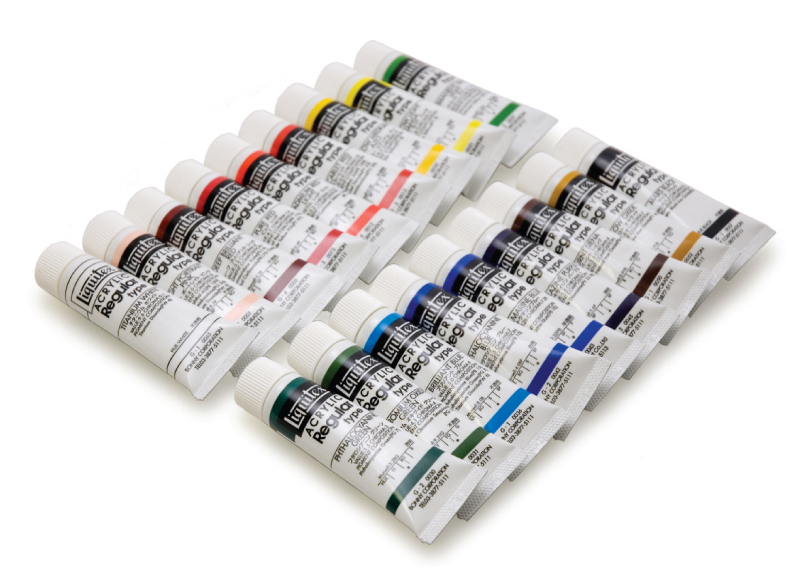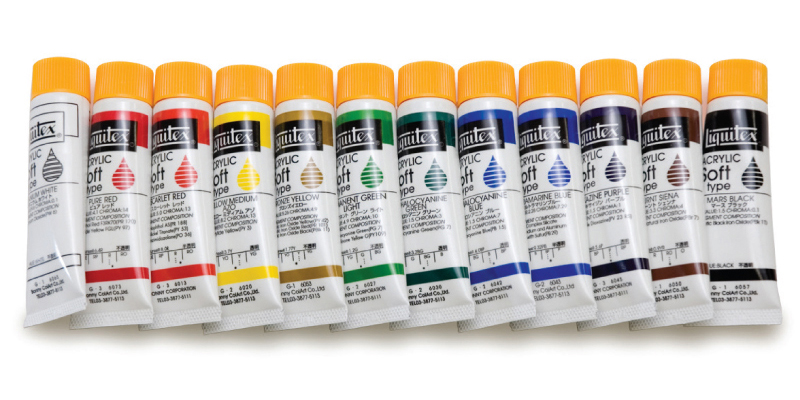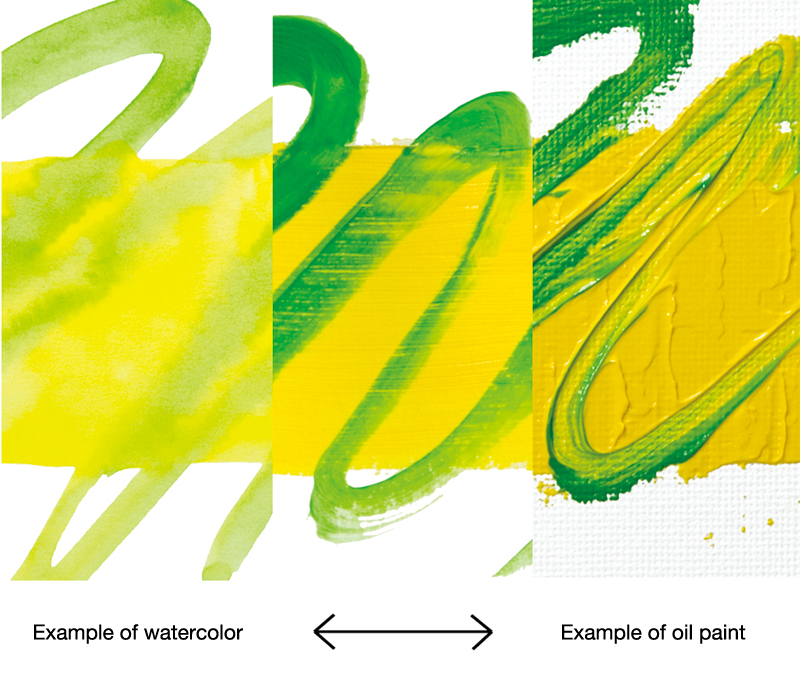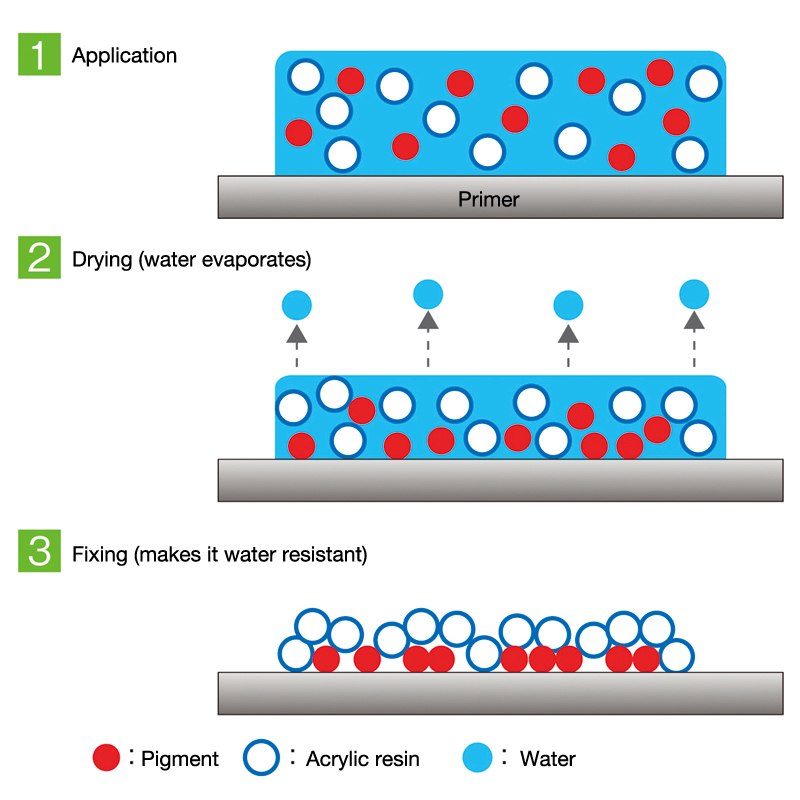Acrylic Paints
アクリル絵具
Acrylic Enogu
CATEGORIES
Acrylic paints are a type of water-soluble paint that uses the acrylic polymers invented in the twentieth century. They were originally developed for the painting of murals. The paint is composed of the same pigments and binders used by oil paints, combined with acrylic polymer emulsion.
With excellent color and durability, acrylic paint resists fading and discoloration, and despite its exceptional fixing strength it is quite pliable, resulting in few cracks and little peeling. Moreover, thanks to its water-solubility it is quick to dry, and, once dried, it becomes water-resistant, making it easy to paint extra layers.
There are multiple types: heavy body types and the milky soft type, which differ in thickness; the gouache type, with its high degree of opacity; and the various mediums, which allow for a wide assortment of applications.
The standard method of using acrylic paints involves thinning the paint with water, as with watercolors. Depending simply on the amount of water used, the paint can resemble a variety of styles, from watercolors to oils.
Because the acrylic resin, though clear itself, takes on a milky color with use, there is a slight difference in tone when wet as compared to when dry. Even when applied liberally, the resulting coats will be thinner than expected as a result of evaporation. Also, because the paint dries quickly, when using a palette the paints must be kept moist, using a mister or similar device, which requires a certain degree of advance planning. If paint should harden on brushes, a specialized thinner may be used to soften it so that it can be wiped off. Remaining paint can be stored by putting it into a sealable container (such as a film case.)
Acrylic paints are available at most art supply stores.
RELATED PAGES
 Regular type
Regular type Gouache type
Gouache type Soft type
Soft type

- Fixing process of acrylic paints

